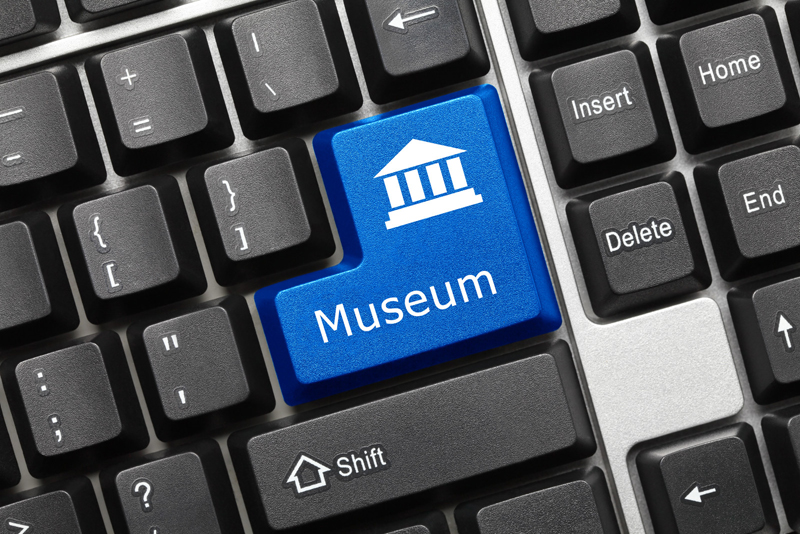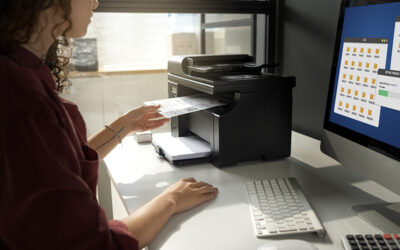
Many heritage organizations like libraries and museums are keepers of most cultural and scientific content, and they are improving their ability to operate in the digital environment. Museums are digitizing manuscripts, artifacts, newspapers etc and this will allow the resources to gain accessibility, flexibility and manipulability. Once digitized materials are placed online, it becomes easy for people who seek information from anywhere at any time. It allows people to access the digitized resources for reading purposes, distant learning, online interactions etc. Professional document scanning companies will assist you in converting manuscripts, newspapers and other historically rich resources into its digital format.
In these uncertain times of COVID-19, museums are facing difficulties. From the past few weeks museums like the Metropolitan Museum of Art, Museum of Fine Arts Boston, and the Smithsonian Museum are shut down. This indefinite shutdown has become challenging for museum professionals and they are in search of creative ways to keep their audiences engaged remotely.
Museums are now popularizing two new hashtags #MuseumFromHome and #MuseumMomentofZen in order to encourage the public to using social channels. The National Gallery of Art, Museum of Modern Art, Frick Collection, Getty Museum etc are using the hashtags on social media channels to share collections, video gallery tours and other educational and entertaining content. With the movement, museums like Rockwell Museum and Chicago History Museum have been providing artworks to people interested in perusing them, but are unable to reach museums due to the COVID scare and shutdown. Since the museums are closed, libraries also are resorting to digital tools in order to capture the attention of the people. According to an article by American Alliance of Museums, here are four types of digital experience that museums can implement during these uncertain times:
- Use social media for new campaign and series: Many museums and other cultural organizations are active on various social media platforms to engage and educate the audience. For example, during the lockdown period when museums were shut, Shedd Aquarium’s staffs shared animal’s field trip on social media. This gathered several million views. Chicago’s Field Museum has set loose a costumed dinosaur, SUE, to explore the museum and reign over the information desk, and broadcast it on social media. Similarly, many other museums are exploring various ways to deliver something for the audience to keep them entertained.
- Live streaming or real time engagement: Due to the lockdown, museum visitors are not able to enjoy the museum experience. So museums are engaging with the public through live streaming content. Live streaming content can attract remote visitors and it is an effective way to keep your museum’s name, programs etc. active among the audience. Cincinnati Zoo hosted a live-stream Home Safari, which included close-up animal experiences along with some fun activities for home. The Georgia Aquarium, Monterey Aquarium, and San Diego Zoo also offer live streams where you can tune in to check in on your favorite animals. Live steaming is best suitable for museums that do not have living collections. Petersen Automotive Museum in Los Angeles is providing educational live-streams for kids, like lessons about making a balloon car, online sessions to create and decorate your own license plate and so on. In Sweden, Moderna Musset has launched “Sofa tours” to encourage the community to join and have a ten-minute guided tour on Facebook and Instagram. The live streaming content need not be lengthy and this content can be repurposed to interact with people.
- Virtual tour of the museum: One of the main advantages of digitizing art and history museums is that it enables virtual tours. Google Art and Culture is already giving 2500 virtual tours across the globe. Virtual tours have always been popular with the advent of the CD-ROM, but new platforms have made it easier to offer such tours, and with more high-quality than ever before. These virtual tours let people to have the experience of the museum remotely. Museums like the Musée d’Orsay, National Gallery of Art, Johannesburg Art Gallery, British Museum, National Museum of African American History and Culture, and the Smithsonian Museum of Natural History are working on the availability of virtual tours that allow visitors to easily explore their collections from anywhere. Museums can also provide the digital experience along with curated Spotify playlists to accompany virtual galleries to provide an exquisite virtual experience. The North Carolina Museum of History is creating “learning packet” full of activities and accessible information that complement virtual tours. If you are planning to set a virtual tour of your museum then this is the right time and make sure that your website is easy to find.
- Virtual reality and artificial intelligence: For museums that have embraced technology, this is the right time to invest in virtual reality (VR) and Artificial Intelligence (AI) programming. Museums like the Smithsonian American Art Museum have made parts of their collections available through a project called “Beyond the Walls,”. The Louvre has brought the world-famous Mona Lisa to the masses with “Beyond the Glass”. Several other museums like The British Museum and Minneapolis Institute of Art have made interactive 3D objects available to the public using sites like SketchFab using desktop, VR, AR to provide remote engagement. Apple is now working with the New Museum in New York City to offer AR(T) Walks, which are AR-powered public art walks featuring works by renowned contemporary artists.
The current lockdown phase is a temporary one but it has helped many museums and other cultural organizations to change their cultural landscape and improve audience experience remotely. Today, several museums are embracing the latest digital strategies at a faster rate. In any digitization project, the role of document scanning companies is very important. Digitization safeguards audio- visual materials and converts them into machine-readable format that prevents them from deterioration. The digital paradigm shift is growing and there is no return to the analog world. Digitization opens up enormous market opportunity for every organization by preserving heritage materials.



